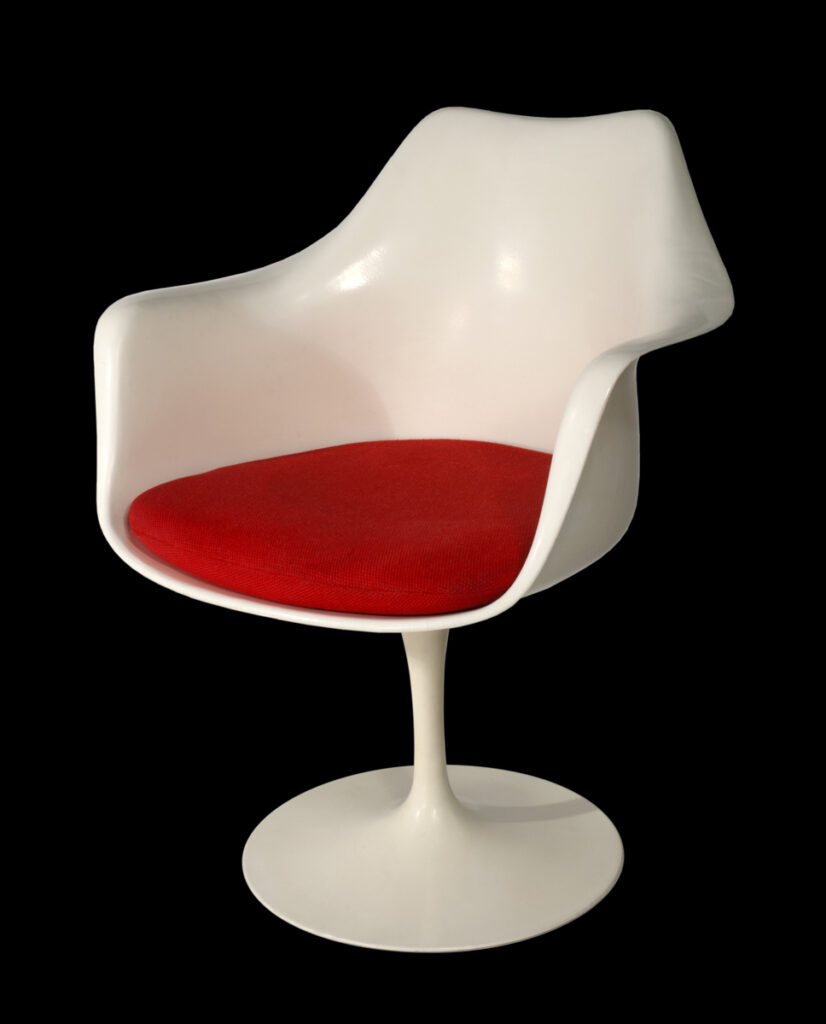Today would be a good day to appreciate some striking examples of architecture, especially since it’s the anniversary of the birthday of Gottlieb Eliel Saarinen in 1873. He’s the Finnish architect famous for art nouveau buildings in the early 20th Century. And it’s also the anniversary of Eero Saarinen, the Finnish architect born in 1910 and famous for modern designs in the mid- to late-20th Century. And if you notice a certain similarity between their surnames, it’s because Eero Saarinen is the famous architect son of famous architect Gottlieb Eliel Saarinen. And that’s the last time I’ll mention “Gottlieb” because he went by Eliel.
Eliel Saarinen studied architecture at the Helsinki University of Technology, and his first major work after graduating was the Finnish pavilion at the Paris World Fair in 1900. He was so influential in architecture that his early work earned a title: Finnish National Romanticism. One of the best examples is the Helsinki Central railway station, which is still there. It was built between 1910 and 1914, and it’s quite a place; I’ve been there.
Saarinen then moved into city planning, and designed the Estonian city of Reval, which is now known as Tallinn. It’s also quite a place, and worth a visit if you’re ever in Helsinki (it’s a ferry ride from Helsinki across the Gulf of Finland). He also worked on the growth plan for Helsinki in 1917 and 1918, and designed both postage stamps and banknotes for Finland.
In 1923 Saarinen moved to the US to work on city planning for the Chicago lake front, and became a professor at the University of Michigan. In 1925 he designed the campus of the Cranbrook Academy of Art, and became its president in 1932. Charles and Ray Eames were among his students — and so was his son Eero Saarinen, who was by then in his early 20s.
Eero Saarinen returned to Europe to study sculpture in Paris, earned a degree from the Yale School of Architecture in 1934, then took two years to tour Europe and North Africa. When he got back home in 1936, he joined his father’s architectural firm. Eero worked with Charles and Ray Eames, who are best known for the Eames Chair, and Saarinen designed the Tulip Chair, which you’d recognize. It’s a modern-looking molded chair on a single pedestal. For a long time, if a movie wanted to suggest that it was occurring “in the future,” they’d put Tulip Chairs on the sets.
In 1948 Saarinen won first prize in a competition to design what is today the Gateway Arch in St. Louis in the US. It wasn’t finished for more than a decade, but is today a national park. The prize was initially sent to Eliel Saarinen by mistake — he was still more famous than his son, and he had also entered the contest.
Eero Saarinen became known for designing iconic corporate headquarters buildings when he designed the General Motors Technical Center in Michigan. After that he was hired by IBM, John Deere, CBS, and quite a number of US universities to design buildings. He’s also responsible for the international terminal at Washington Dulles airport.
In 1957 Saarinen joined the jury selecting a design for the Sydney Opera House, which I’m sure you’ve seen. He rescued the whole project by retrieving Jørn Utzon’s design, which the previous jury had discarded in the first round. Saarinen championed the design, it won, and that’s the Sydney Opera House everybody knows. Saarinen’s most famous design, possibly after the Gateway Arch, is the TWA Flight Center at John F. Kennedy Airport in New York. He not only designed the building, but most of the furniture inside — it’s now the TWA Hotel.
Eliel Saarinen died in 1950 at 76, and Eero lived just 11 more years and died at 51 of a brain tumor. You can see their work around the world, and even relax in one of Eero’s chairs.

The Saarinen Tulip Chair (armchair version)
